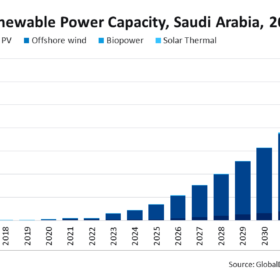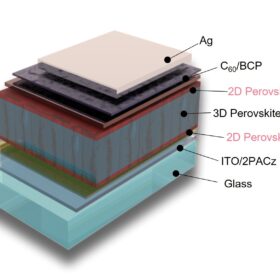Scientist hails commercial feasibility of Saudi Arabian hydrogen city plan
Alberto Boretti was a senior research professor at Prince Mohammad Bin Fahd University in 2021 when he first started discussing the idea of a hydrogen city in Al Khobar, Saudi Arabia. The New Zealand-based independent tells pv magazine that it is now commercially feasible, as the city’s 200 MW of energy demand would necessitate 1 GW to 1.3 GW of solar and wind capacity, 509 MW to 997 MW of electrolysis capacity, and 145,000 MWh of hydrogen storage capacity.
GameChange Solar, JZNEE to build 3 GW tracker factory in Saudi Arabia
GameChange Solar, a US-based tracker supplier, has announced the construction of a 3 GW tracker factory in Saudi Arabia, with plans for potential expansion to 5 GW in the future.
Attica-Crete leg of Mediterranean super grid due mid 2025
Greece has grand plans for an interconnector network that runs from the Middle East through to the heart of Europe. pv magazine examines the latest developments on the road to a Mediterranean super grid and what it might mean for the regions involved.
Saudi Arabia could hit 130 GW of renewables by 2030, says GlobalData
GlobalData say it is “plausible” that Saudi Arabia could close in on its target of 130 GW of renewables by 2030 by strengthening policies, competitive auctions and other financial measures.
Reducing PV module temperature with radiative cooling based on polymeric coatings
A Saudi research group has assessed how polymeric coatings, such as polyethylene terephthalate (PET) and polydimethylsiloxane (PDMS), could be used for radiative cooling in photovoltaic panels and has found that both materials could reduce the operating PV module temperature by between 1.15 C and 1.35 C.
ACWA forces offline Moroccan CSP plant following leak
ACWA Power’s preliminary analysis of a leak in the hot molten salts tank at its 150 MW solar plant in Morocco indicates a forced outage until November this year.
Perovskite solar cell with self-assembled organic electron transport layer achieves 21.5% efficiency
Developed by scientists in Saudia Arabia, the device is reportedly the most efficient perovskite solar cell ever reported to date with an organic electron transporting layer. The cell achieved an open-circuit voltage of 1.13 V, a short-circuit current density of 24.7 mA cm2, and a fill factor of 77%
Scientists describe anti-soiling performance mechanisms in solar glass
Laboratory and outdoor soiling experiments conducted in Saudi Arabia have shown that increased particle resuspension by wind is one of the dominant factors for high anti-soiling performance in photovoltaic glass.
Inverted perovskite solar cell with 2D/3D heterojunctions achieves 25.6% efficiency
An international research team claims to have achieved optimal passivation in inverted perovskite solar cells by applying thin layers of low-dimensional perovskite on top of a 3D perovskite film. The resulting cell achieved an open-circuit voltage of 1.19 V, a short-circuit current density of 24.94 mA cm2, and a fill factor of 85.9%.
Dubai’s high-rise buildings perfect match for building-integrated photovoltaics
Scientists in the Middle East have simulated the use of different building-integrated PV systems on Dubai’s high-rise buildings. They found that for buildings with more than seven floors, BIPV may be superior to rooftop power generation.









